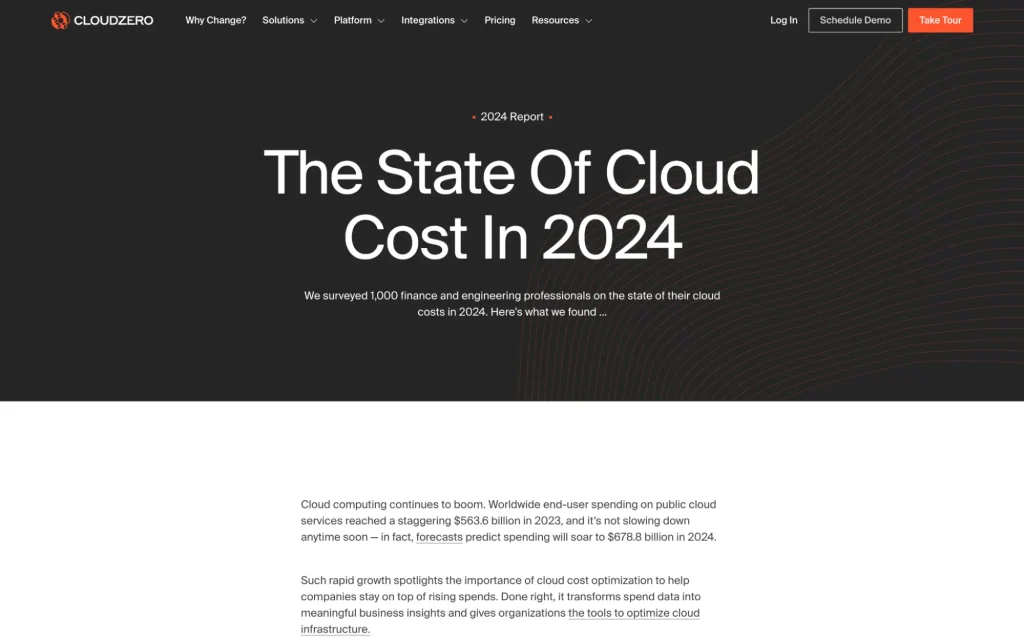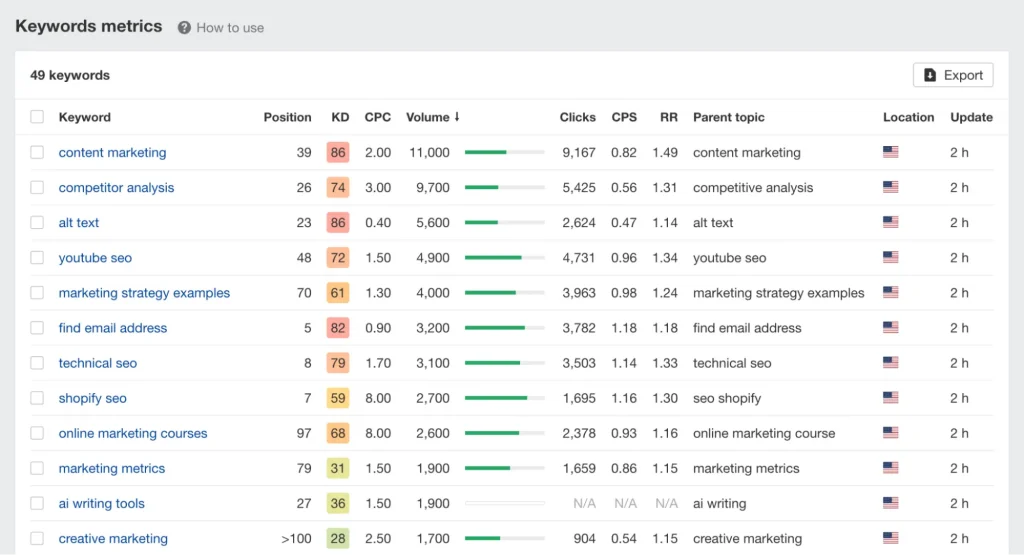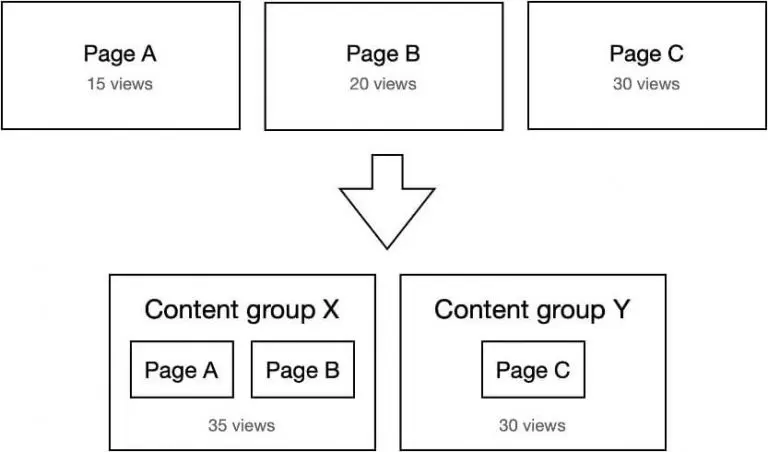Technical content marketing applies the general principles of content marketing (educational, trustworthy, and problem-solving content) and tailors it to a technically-minded audience.
This type of content typically has a narrower focus on how your product works for audiences who are already familiar with the subject matter, and use cases might include anything from auto mechanics tools to artificial intelligence large language models.
In this guide, I’ll explore the key benefits of technical marketing for your business, as well as cover steps to creating effective content for technical buyers.
The Benefits Of Technical Content Marketing
Technical content helps build the discoverability of your brand, helping your business get noticed “by the right audience” with genuine, educational content on the topics that matter to your prospective buyers.
With discoverability comes brand awareness, trust, and authority — all key aspects of making the sales your business needs to become and remain profitable.
Let’s explore the practical benefits of technical content marketing in more detail.
Educate prospective buyers
Educating your audience is a crucial aspect of technical content marketing. If your target personas aren’t yet at the buying stage, you can create Top Of Funnel (TOFU) content to establish your business as an authoritative and trustworthy figure in your industry.

Source: Trendemon
95% of marketers already create TOFU content because it helps establish a relationship with prospective buyers, with the hope they will remember your brand and return as they progress down the marketing funnel from awareness to consideration and intent.
Technical content is harder to produce but successful technical content has an even greater potential to stand out in a prospective buyer’s mind.
TOFU content also helps build brand awareness, which is a crucial step in forming a relationship with your target audience. Once customers recognize your business, they’re much more likely to make repeat purchases, recognize you as a trustworthy source of information, and even recommend you to others.
After all, it doesn’t matter how incredible your technical experience is or how complex your technical content marketing strategy is — without trust, prospective buyers will look elsewhere.
Reach buyers at the right time
60% of prospects search for a brand before buying — your business must build a presence on search engines. By creating purposeful SEO content to target the high-intent keywords that prospective buyers are searching, you can reach buyers at just the right moment — driving traffic to your site and converting visitors into leads with signups or demo requests.
High-intent keywords are the specific search terms that people use when they are preparing to make a purchase. These keywords are important because they represent a prospective buyer who is ready to take the next step.
Here are a few examples:
- Comparison searches (e.g., “WordPress Vs. Wix”, “HubSpot Vs. Salesforce”, “Ahrefs Vs. SEMrush”, etc.)
- Tools or alternatives-based searches (e.g., “The Best SEO tools”, “Best CRMs”, “Email Marketing Software”, “HubSpot Alternatives”, etc.)
In other words, these users are no longer considering — they’re ready to take action. If you can rank for these high-intent keywords, they will be some of your highest-converting pages.
Cultivate trust
All of these benefits cumulate in one thing: trust. Buyers want to purchase from brands they recognize as an authoritative figure, particularly for technical topics where they are seeking the nitty-gritty details of how your product works and how it will benefit them.
Remember, the goal of any content marketing strategy is not to sell or promote a brand. It is about establishing your brand as a trustworthy source to then encourage your ideal customer to feel safe and secure in making a purchase from you.
Adobe’s Future of Marketing research series reported that 7 in 10 customers will buy more from brands they trust and abandon those they don’t. The sentiment of this UK-based survey is echoed in the US with PwC’s report on Consumer Trust: 71% of consumers say they’re unlikely to buy if a company loses their trust.
Drive sales
So, your audience trusts you. Now it’s time to reap the rewards with the most crucial benefit of technical content marketing: sales.
According to a Forbes report, 92% of marketers agree that content is a valuable business asset for driving long-term ROI with an average return of $2.77 for every $1 — equating to 177% profit.
Furthermore, 62% of those surveyed in this report said that content marketing has the highest ROI from a business perspective. With content marketing costing 52% less than traditional marketing and 41% less than paid search, it’s easy to see why content marketing is so beneficial to marketing teams.
6 Tips To Create Effective Content For Technical Buyers
Content marketing has never been more important. In 2024, the content marketing industry will grow to be worth an estimated $600 billion with 90% of marketers including content in their marketing strategies.
So, how can you create effective technical content for your prospective buyers?
1. Understand your audience
Typically, you’ll want to start with a deep and genuine understanding of your audience. Who are they, what is their existing knowledge level, and what problems are they hoping to solve?
Remember: There is a big difference between knowing your audience and assuming you know your audience. It may be beneficial to build an Audience Profile. Hubspot has an excellent guide for putting these together, including the types of demographics, psychographics, and buying behaviors your audience might identify with.
2. Find a technical writer
This is easier said than done, but businesses must place an emphasis on finding the right writer (or agency) to work with. They should have a technical background and/or experience creating technical content.
For example, I work with writers who focus solely on creating content for technical audiences (e.g., software engineers). While they don’t necessarily have a software engineering background or degree, their years of experience in creating technical content allows them to create highly detailed pieces.
When something more detailed is required, I also contract with actual software engineers who have a knack for writing. Having a mix is key — as is knowing who to assign what content.
It can be challenging to assemble an effective writing team and you will need to carefully consider your business objectives. You may decide to create a specialized role for this kind of content (e.g., Technical Content Writer or Technical Author), or you may want your developers to create a rough draft for your writing team to rewrite and revise.
No matter how your business decides to structure your technical writing teams, you must find a way to balance depth of knowledge and quality of writing, because neglecting either side of this equation risks your credibility and your audience engagement.
3. Target high-intent keywords
Companies must prioritize keywords that lead to conversions (e.g., signups or demo requests). There are specific keywords in each industry that drive conversions — Bottom Of Funnel (BOFU) keywords where someone is actively looking for a solution.
High-intent keywords have a “transactional or commercial intention” that indicates a desire to purchase. This intent means users need less convincing from you to convert (i.e., make a purchase, signup, request a demo, etc.).
However, don’t forget the power of high-volume keywords. While they may not necessarily be high-intent (i.e., likely to lead to a conversion), they can help drive more website traffic than longer-tail, high-intent keywords.
This can be good for creating brand awareness and capturing people in your target audience earlier in the buyer journey (e.g., using a lead magnet to capture emails and nurture buyers through email marketing).
4. Create specific, valuable content
42% of decision-makers think B2B content is often too general. This statistic from the 2023 Trust in Marketing Index indicates a significant gap between what businesses are offering and what prospective buyers expect.
We’ve already established that trust is a crucial benefit of technical content marketing — but to win this trust, your business has to prove your worth with specific, detailed, valuable content.
In the survey, respondents were asked to select up to three approaches that B2B marketers can take to build trust with them. These so-called “trust boosters” were ranked in order of popularity: provide case studies (42%), followed by actionable data (35%), access to experts (35%), and specific problem-solving content (29%).
All of these so-called trust boosters are key aspects of technical content marketing and an indication that businesses need to create B2B content with a more technical approach.
The key finding from this report is that B2B content marketers must “build flagship content on original insights” by commissioning research or tapping into first-party data to differentiate themselves from existing publishers of technical content.
Data-driven content is hard to create but it is invaluable to your audience. For instance, at CloudZero we created a “State Of Cloud Cost” report in 2022 and 2024. We surveyed over 1,000 software engineering and finance professionals (two of our target audiences) both times, compiled the data, generated key insights, and published a well-designed landing page.

The report helped us achieve several results:
- We created data-driven content that no one else could;
- The report positions us as an authority/thought-leader in our space;
- It also helped us create original content we could share with our email database (i.e., lead nurturing);
- It’s been mentioned on well-known, established websites like Splunk, Formstack, Liquid Web, and BuiltIn — furthering our brand awareness;
- Lastly, the report is one of our best pages for attracting backlinks, which helps improve our Domain Rating and improves our ability to rank for competitive keywords our target audience searches.
5. Be consistent
Publishing a blog post here and there (or even once or twice a month) won’t get you anywhere. You need a strategy. Make sure to decide which keywords you want to target before writing (not the other way around!) and set a publishing frequency you can stick to — for example, two blog posts per week.
To do this most effectively, you’ll want to create a content marketing plan. The key elements of a content marketing plan typically include goals and objectives, audience personas, and a methodology for assigning content types (e.g., blog posts, videos, infographics, and podcast episodes).
Whether you have a team of one or a team of a hundred, having these elements set in a concise content marketing plan will help you remain consistent throughout every step of the content creation process.
6. Measure your results
A key way to measure the results of your technical content marketing strategy is by tracking keywords in a Rank Tracker like Ahrefs.

Source: Ahrefs
This will enable you to see where you stand in Google Search Page Results (SERPs) for your target keywords, how your ranking is trending over time, and whether or not you need to improve your content.
For example, if your content is struggling to rank in the top five to 10 results six months after publishing the article, you may need to go back and improve it — adding additional subtopics, research, screenshots, diagrams, etc.
Additionally, it’s a good idea to track how your content leads to tangible results on your website. For example, which blog posts drive the most demo requests or signups? Assuming your website has Google Analytics set up, there are several ways to track the performance of your technical content.
For example, Content Groups allow you to track certain kinds of content (e.g., blogs) separately. This can provide high-quality insights compared to looking at blog pages one by one.

Source: Analytics Mania
Google Search Console (formerly known as Webmaster Console) is another useful tool for assessing the performance of your technical content marketing strategy. While not as comprehensive as paid tools like Ahrefs and SEMrush, HubSpot offers an excellent guide for getting the most out of Google Search Console.
Conclusion
Technical content marketing is an effective way to connect with your audience on a deeper level. It requires an existing depth of knowledge from both sides — writer and reader — but the lasting impacts of the expertise, trust, and authority gained will ensure your businesses can beat your competitors.
Remember, the best technical content marketing strategies start with two things: an authentic understanding of your audience and the right technical writer for the topics you want to cover.
Then, by incorporating high-intent keywords and a mix of TOFU and BOFU content, you will be ready to meet prospective buyers wherever they are in the marketing funnel.


.svg)


.svg)